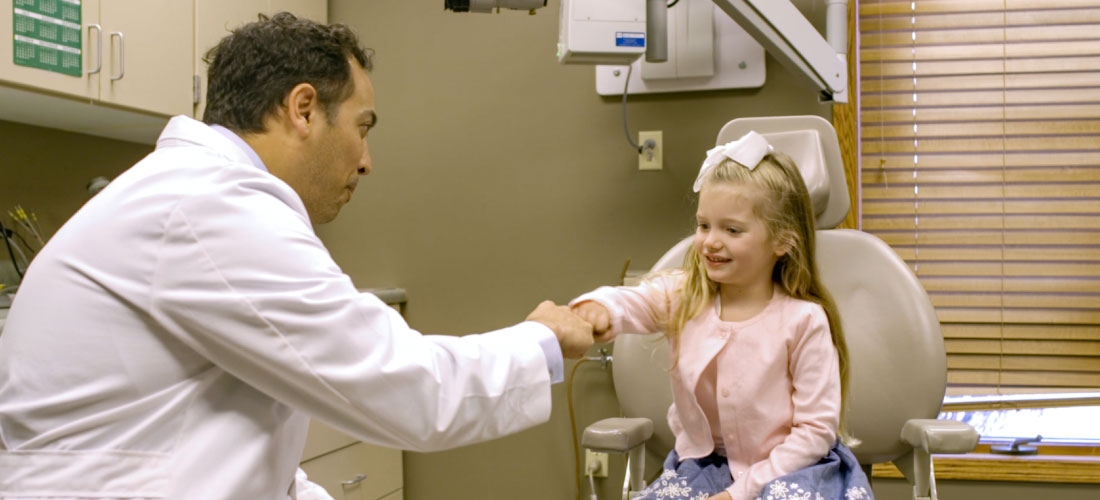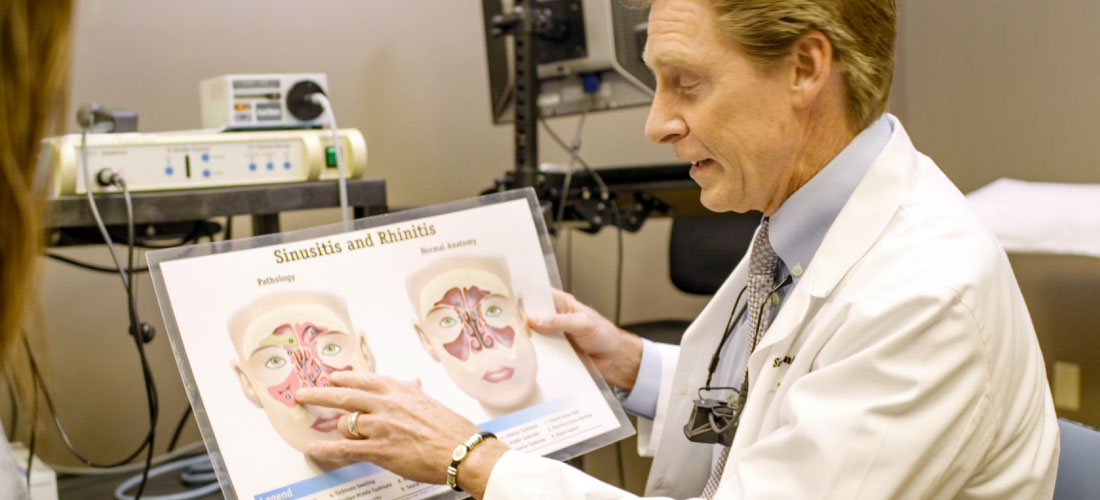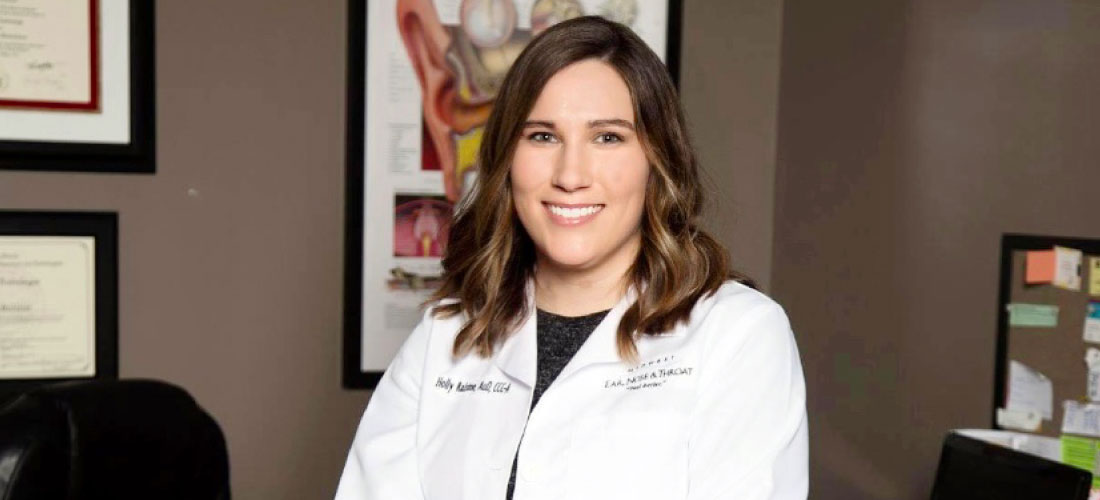Hearing loss doesn’t just mean someone needs to turn up the TV or ask “Can you repeat that?” It has also been linked to an increased risk of dementia.
The doctors at Midwest ENT & Allergy know parents have concerns when their child seems to be suffering. Dr. Todd provides answers to six common questions parents have when it comes to testing kids for allergies
Hearing Loss & Hearing Aids
 Hearing loss affects one in ten North Americans. Otolaryngology is the treatment of ear disorders. Otolaryngologists are trained in both the medical and surgical treatment of hearing, ear infections, balance disorders, ear noise (tinnitus), nerve pain, and facial and cranial nerve disorders. They also manage congenital disorders of the outer and inner ear. Otolaryngologists are commonly referred to as ENT physicians.
Hearing loss affects one in ten North Americans. Otolaryngology is the treatment of ear disorders. Otolaryngologists are trained in both the medical and surgical treatment of hearing, ear infections, balance disorders, ear noise (tinnitus), nerve pain, and facial and cranial nerve disorders. They also manage congenital disorders of the outer and inner ear. Otolaryngologists are commonly referred to as ENT physicians.
Midwest ENT Hearing Center is a medical facility for the diagnosis and treatment of ear, hearing, and balance problems. We are dedicated to providing high-quality, caring, personal, and affordable service in a comfortable environment. Our experienced team of highly-trained physicians and audiologists offer our patients a broad range of medical and surgical hearing services. We utilize the latest in state-of-the-art technology and equipment, including high technology, virtually invisible hearing aids, cochlear implants, and Earlens, the world's first and only hearing solution to directly vibrate the eardrum, delivering more natural sound quality and better hearing in noise.
Our goal is to be the center of excellence for the complete care of the ear, hearing and balance in Sioux Falls. We aim to improve hearing, communication, and quality of life for the patients we are privileged to serve. Some of the diagnostic and treatment services we provide include:
 State-of-the-Art Hearing Aid Sales and Service
State-of-the-Art Hearing Aid Sales and Service- Ear Disease, including Chronic Ear Infections and Childhood Ear Infections
- Bone-Anchored Hearing Aids or Auditory Osseointegrated Implants
- Cochlear Implants
- Hearing Problems in Children and Adults
- Microscopic and Laser Surgery of the Ear
- Dizziness and Balance Problems, including Ménière's Disease
- Tinnitus (unwanted noises in the ear)
While hearing aids can be used to correct most hearing problems, many people may be hesitant to wear them. That's why two local hearing experts are trying to help break down the stigma that comes with wearing the devices.
What started as a treatable case of influenza quickly turned into something Bob Froke would never fully overcome. "I was missing orders. It was kind of embarrassing and frustrating. I was just really starting to get an empathy for what my patients go through," Froke said. Froke, an audiologist himself was experiencing symptoms he was used to treating his own patients for. "I was asking my colleagues, what? What was that? You know, I was missing things. They put me in the sound booth and tested my hearing and lo and behold I had a 40-decibel hearing loss," Froke said.
Influenza had settled in his ears, and according to Dr. Kenneth Scott viral infections resulting in hearing loss are more common than you may think. "People will often wake up in the morning, they'll hear ringing in their ear as a new thing that they haven't heard before or they even notice that they can't hear their spouse talking to them," Scott said.
Froke says it took him 7 months to accept what was happening. "I bargained. I denied it. I got angry. I thought it would come back but it didn't. Then I'd blame other people, you're mumbling, you're not looking at me... all those things," Froke said. Froke's job depended on his hearing and it was time to face reality. "I was fit with hearing aids and now I don't want to be without them," Froke said. Hearing screenings can be performed at any age, and experts say the sooner the better.
"Your family members are maybe giving you a heard time, and even if you don't need any help at least then you have some proof that you checked it out and they'll leave you alone," Scott said. Froke says thanks to new technology, he can't imagine being without his hearing aids. "I'm a pretty cool grandpa now. I have two grandkids and they go, wow gramps that's pretty cool! Because I can play my music, I have about 400 songs in here and it streams right to my hearing aids," Froke said.
Story by Sophia Heineman
FOR HEALTHBEAT -KELOLAND NEWS
Midwest Allergy Drops
Allergy relief is at the tip of your tongue. Immunotherapy is the only allergy treatment that has the potential to cure the disease. It gets at the cause of the problem, rather than just treating the symptoms. Immunotherapy, to desensitize allergies, can be administered as shots or under the tongue (sublingual) drops. Midwest Allergy Drops are a proprietary form of sublingual immunotherapy (SLIT) formulated specifically for you based upon your allergy profile. Midwest Allergy Drops offer patients a less invasive choice for desensitization of their allergies.
Allergy Testing and Treatment
Allergy testing can be done to find out what substances, or allergens, may cause an allergic reaction in patients. There are several testing methods, including:
Skin testing
The skin prick test can be done to identify inhaled and airborne allergens, such as pollens, molds, dust mites, feathers and pet dander. This test can also identify food allergens, such as eggs, milk, peanuts, soy, wheat or soybeans. Skin tests work by exposing a person to suspected allergens and seeing if a reaction occurs.
With skin testing, a patient may feel a slight pricking sensation when the needle penetrates the skin. If someone has an allergic reaction from any of the skin tests, they may experience some itching, tenderness or swelling where the allergen solutions were put on the skin.
Blood testing
A blood test may be done instead of a skin prick test if a person has hives or another skin condition that makes it hard to see skin testing results, or cannot stop taking a medicine such as an antihistamine that may prevent or reduce a reaction to a substance, even when they are allergic to it. Another reason to use this method would be if the patient has had a severe allergic reaction, or has had positive skin tests to many foods. Allergy blood tests look for substances in the blood called antibodies.
The method of testing we use will indicate not only what you are allergic to, but also how allergic you are. This type of testing can also help determine whether a person may have a drug allergy or be allergic to insect stings and bites. Once we determine what you are allergic to, we can attempt to minimize exposure.
Because avoidance is often not practical in the real world, we often prescribe a specific medication to aid in allergy treatment. A number of medications are useful in the treatment of allergies, including antihistamines, decongestants, cromolyn, leukotriene inhibitors, and cortisone-type preparations. Hypertonic saline irrigations can also help a lot. This allows the patient to literally wash the allergens and irritants out of their nose. Nasal steroid sprays also work incredibly well for allergies.
The only “cure” available for inhalant allergens is the administration of injections that build up protective antibodies to specific allergens, including pollens, mold, animal dander, dust, etc. This series of allergy shots really desensitizes the immune system and helps our patients live a more normal life.
If medical and immunotherapy are not enough, we can consider the latest technology to endoscopically open up the sinuses or nasal passages. New discoveries and therapies are constantly emerging in immunology. We will discuss all possible treatment options with you at your appointment.
Types of Allergies
Seasonal Allergies
Allergies are often worse for patients during the pollinating season. This is termed seasonal allergic rhinitis or hay fever. Hay fever is caused by pollens. The most significant pollen in the US is ragweed. It begins pollinating in late August and continues until the first frost. Late spring-time pollens come from the grasses, such as Timothy, Orchard, Red Top, Sweet Vernal, Bermuda, Johnson, Brome and Bluegrass. Early spring-time hay fever is most often caused by pollens of trees such as Elm, Maple, Birch, Poplar, Ash, Willow, Oak, Cottonwood and Alder. Colorful or fragrant flowering plants rarely cause allergies because their pollens are too heavy to be airborne.
Perennial Allergies
Certain allergens are always present. These include house dust, household pet danders, foods, wool, various chemicals used around the house, and more. These are termed perennial or year-round allergens. Symptoms from these are frequently worse in the winter when the house is closed up. Mold spores cause at least as many allergy problems as pollen. Molds are present all year long and grow outdoors and indoors. Dead leaves, farm areas and lawns are common sources for outdoor molds. Indoor plants, old books, bathrooms and damp areas are common sources of indoor mold growth. Molds are also common in foods, such as cheese and fermented beverages.
Food Allergies
Patients who react quickly and violently to oral medications or specific foods have food allergies. These are termed fixed allergies and are often seen with oral penicillin or peanuts. Once someone has a fixed food or drug allergy, they will always be sensitive to it. The main treatment is simple avoidance, although most patients also carry epinephrine in case of accidental ingestion. These patients can also have adverse reactions to foods that are non-allergic, including lactose intolerance, intolerance to MSG, or even food poisoning. There is, however, a growing body of evidence that many foods can affect patients in more of a delayed fashion. These are called cyclic food allergies. The symptoms are more chronic in nature and usually do not manifest themselves for hours, or even a couple of days after the food is eaten. Another phenomenon called “masking” happens when the offending food can actually offer temporary relief of the symptoms. This can often lead to the patient actually craving the food to which they are allergic. There are a number of ways to test for this.













